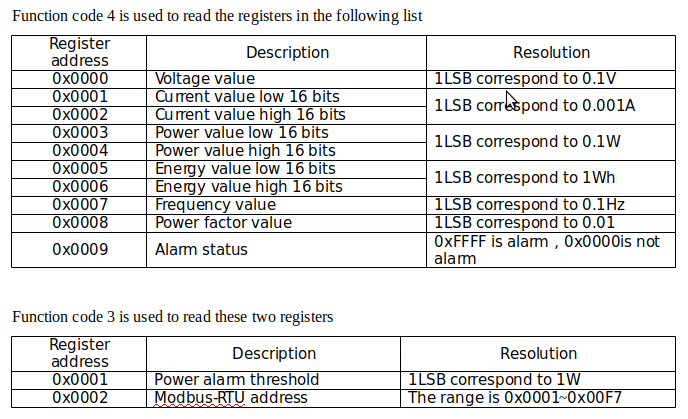The PZEM-016 has a total of only 12 register addresses. Here’s the map:

It would’ve been nice if they implemented the processor’s bi-directional functions on the 485 bus. ![]()
The PZEM-016 has a total of only 12 register addresses. Here’s the map:

It would’ve been nice if they implemented the processor’s bi-directional functions on the 485 bus. ![]()